There is an incredible amount of science going on in polar regions and for good reason. Climate change affects polar regions more significantly than other places around the globe. Also, polar regions are often sites of intact and pristine environments that have little to no human occupancy. They are extreme places in location, weather/climate, and biota. Scientists in Antarctica are studying microbial life, plankton, nematodes (flat worms), fishes, birds and mammals. They are also looking into the mechanisms of how and why ice melts within ice shelves. They are mapping the sea floor, designing models of change within ecosystems as well as climate, exploring places that have never been explored, researching volcanism, glacial deposition, rock and ice strata for clues about past climate record, plate tectonics and a whole lot more.
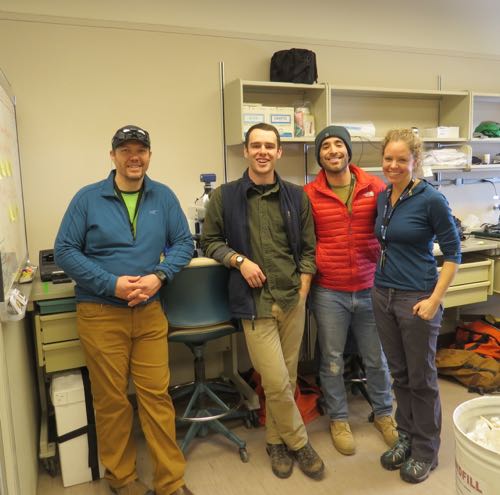 Fish protein group out of California. Dr. Sean Place, on the left, is the PI. His team includes Kristen Hosek, Sam Bogan and Anthony Tercero. I loved talking with this group. They could come to APBio anytime and talk proteins.
Fish protein group out of California. Dr. Sean Place, on the left, is the PI. His team includes Kristen Hosek, Sam Bogan and Anthony Tercero. I loved talking with this group. They could come to APBio anytime and talk proteins.
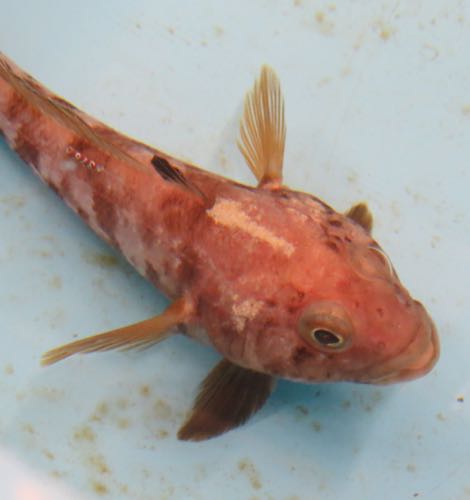 An emerald rockcod, Trematomus bernacchii, is one type of fish in Dr. Place's experiment. They are seeking to discover how these fish respond to changes in water temp.
An emerald rockcod, Trematomus bernacchii, is one type of fish in Dr. Place's experiment. They are seeking to discover how these fish respond to changes in water temp.
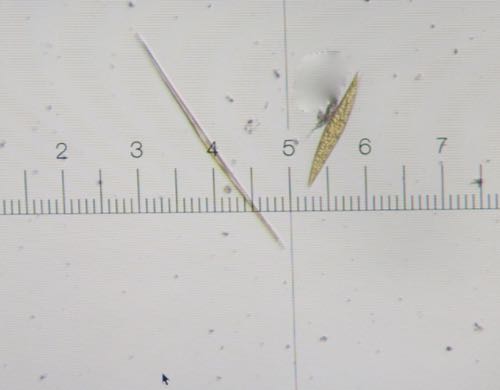 Diatoms in a water sample. Looking at the projection screen while Kirsten Carlson runs the microscope!
Diatoms in a water sample. Looking at the projection screen while Kirsten Carlson runs the microscope!
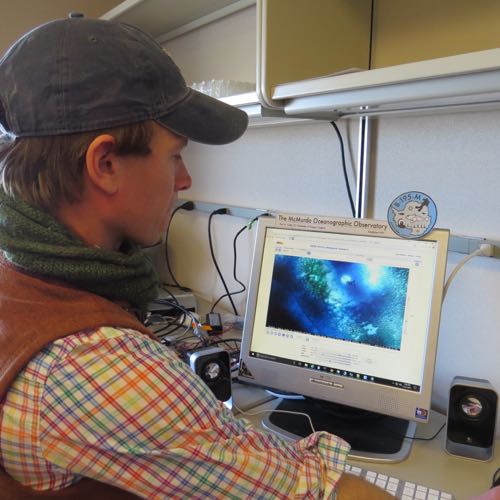 Dr. Paul Cziko shows me the underwater camera display they are hoping to feed to the world at large!
Dr. Paul Cziko shows me the underwater camera display they are hoping to feed to the world at large!
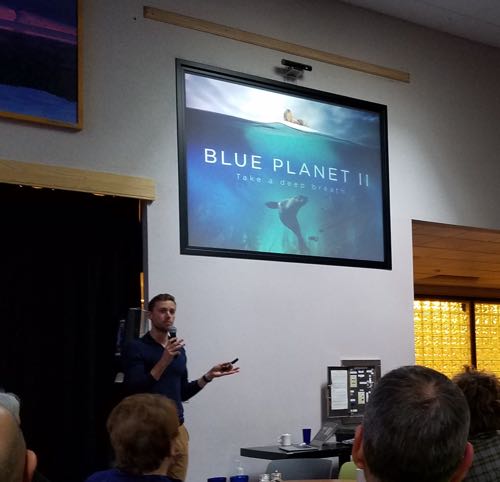 BBC crew leader, Michael Becker, presenting at the Sunday Night Science Lecture. Photo taken by Yongli Gao.
BBC crew leader, Michael Becker, presenting at the Sunday Night Science Lecture. Photo taken by Yongli Gao.
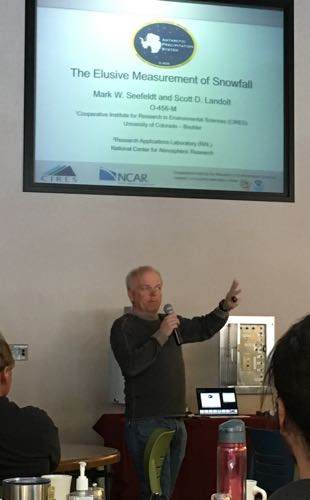 Snow measurement was Sunday's talk. Here, scientist Mark Seefeldt introduces his work.
Snow measurement was Sunday's talk. Here, scientist Mark Seefeldt introduces his work.
I walk around Crary lab and pass by posters of previous scientific studies. From biology to astrophysics, it is being done here. The community of scientists currently on station are generous with their time and knowledge. They are excited about their work and work long hours to complete it. There are no days off here in the lab. Scientists are working literally, around the clock every day of the week.
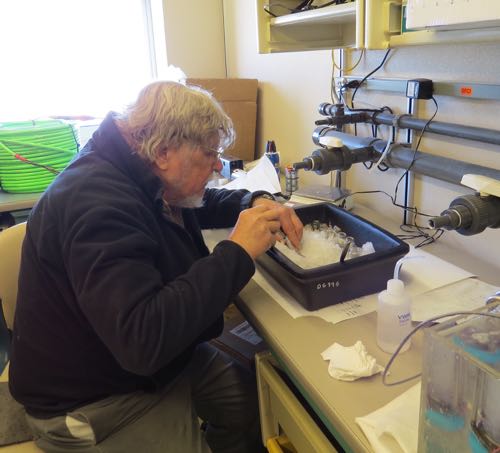 Dr. Art DeVries allowed me to watch him dissect some fish. He is extracting various tissue rich with DNA.
Dr. Art DeVries allowed me to watch him dissect some fish. He is extracting various tissue rich with DNA.
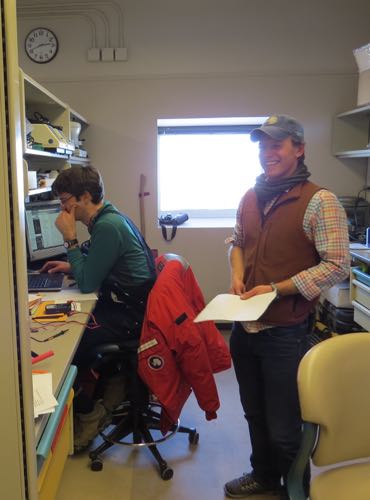 Dr. Paul Cziko and Nick Santos, a member of his team, are hard at work. They are working on a multitude of projects from fish protein to underwater camera installation and diving footage.
Dr. Paul Cziko and Nick Santos, a member of his team, are hard at work. They are working on a multitude of projects from fish protein to underwater camera installation and diving footage.
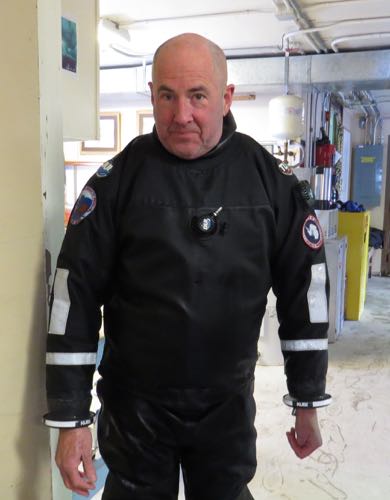 Henry Kaiser is ready for a dive.
Henry Kaiser is ready for a dive.
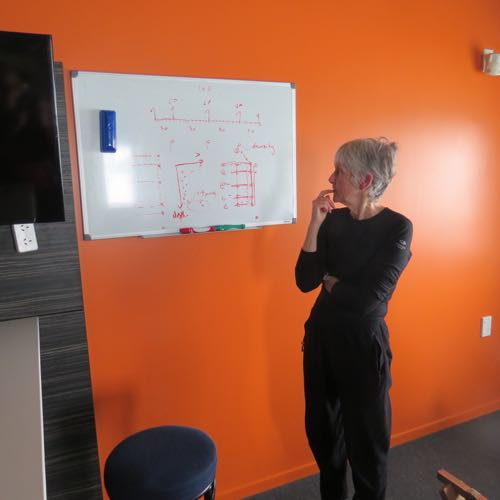 We were invited to dinner by the Kiwi team. Following dinner, Pat Langhorne showed us her thin sections and talked with us about ice structure. A truly, lovely and remarkable woman.
We were invited to dinner by the Kiwi team. Following dinner, Pat Langhorne showed us her thin sections and talked with us about ice structure. A truly, lovely and remarkable woman.
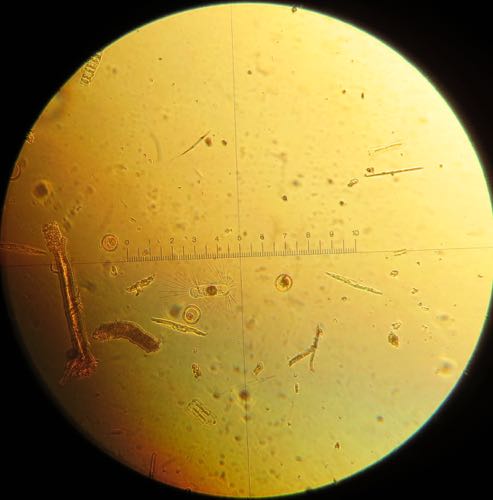 Diatoms in our sample of platelet slush ice. This view is looking through the scope. I got my biology on!
Diatoms in our sample of platelet slush ice. This view is looking through the scope. I got my biology on!
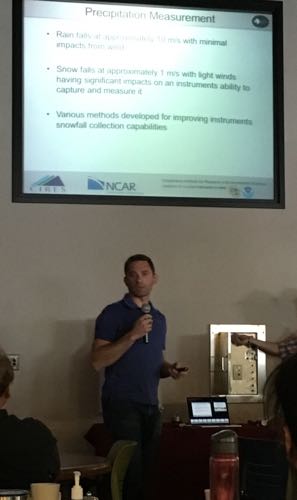 Scott Landolt was part of the elusive measurement of snowfall presentation. He explains why snow is so difficult to capture acurately.
Scott Landolt was part of the elusive measurement of snowfall presentation. He explains why snow is so difficult to capture acurately.
I have been fortunate enough to not only come to Antarctica but also to witness this science and talk with those that are doing it. I have met legends of science, like Art DeVries, Pat Langhorne, and Grammy winner and Oscar nominee, Henry Kaiser. I have had the opportunity to meet National Science Foundation admins and reps, artists and writers and even the crew of the BBC that is here on assignment for their next big project, Seven Worlds, airing in 2020.
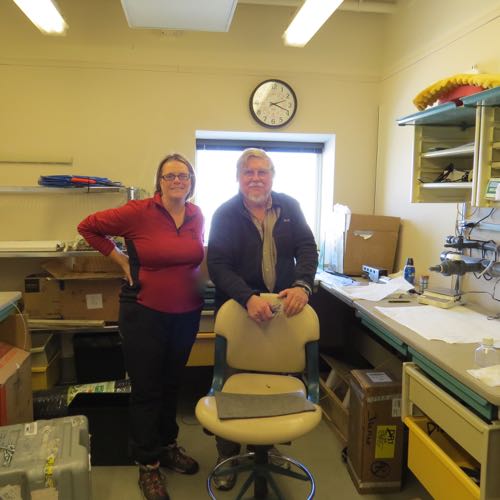 Dr. DeVries, the legend, standing next to me. One of the highlights of this trip was meeting Art! Photo by Konrad Meister.
Dr. DeVries, the legend, standing next to me. One of the highlights of this trip was meeting Art! Photo by Konrad Meister.
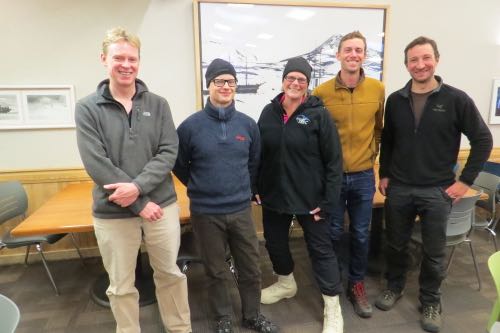 The crew of the BBC posed for a photo. John Brown, Espen Rekdal, me, Michael Becker and Hugh Miller. Photo taken by Greg Neri.
The crew of the BBC posed for a photo. John Brown, Espen Rekdal, me, Michael Becker and Hugh Miller. Photo taken by Greg Neri.
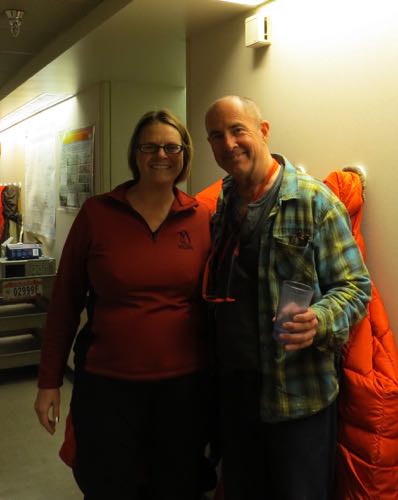 Henry Kaiser and I pose for a photo. He is an extraordinary person, diver, scientist, musician, photographer, videographer… this man is another legend. We had many conversations over the the weeks!
Henry Kaiser and I pose for a photo. He is an extraordinary person, diver, scientist, musician, photographer, videographer… this man is another legend. We had many conversations over the the weeks!
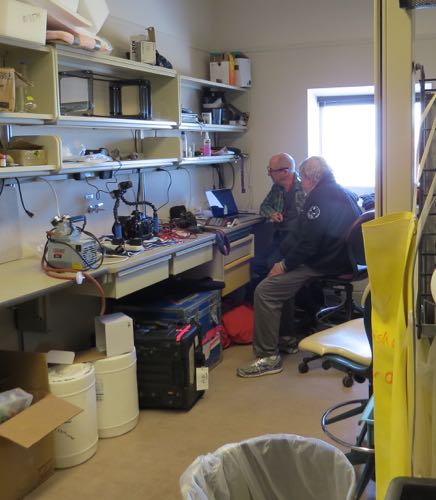 Art and Henry discussing work for their team.
Art and Henry discussing work for their team.
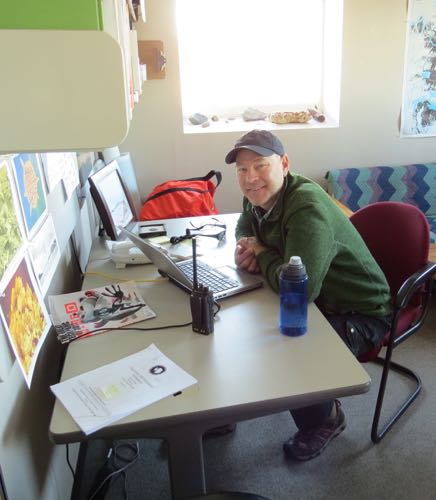 Curt LaBombard is one of the McMurdo Station managers. He has been in charge of overseeing our group since we arrived.
Curt LaBombard is one of the McMurdo Station managers. He has been in charge of overseeing our group since we arrived.
My time is quickly approaching its final days. Today's journal is largely dedicated to science and in particular to those that are making it happen in Antarctica. I am thankful to have had this experience and hope someday, a few of my students will have the opportunity to experience this too.
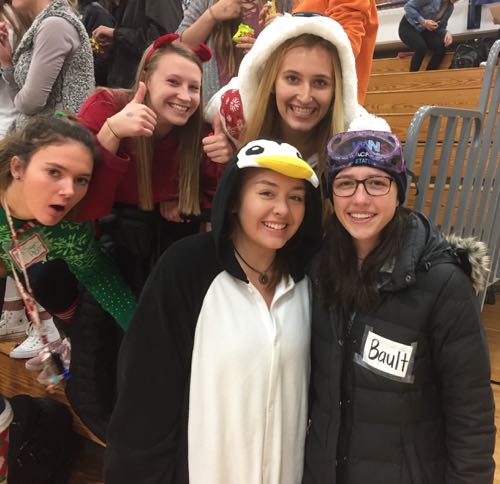 A few of my students at Nicolet dressed up in polar gear and penguin suits at a v-ball game shortly after I left! I miss my students! Photo by Dr. Greg Kabara.
A few of my students at Nicolet dressed up in polar gear and penguin suits at a v-ball game shortly after I left! I miss my students! Photo by Dr. Greg Kabara.
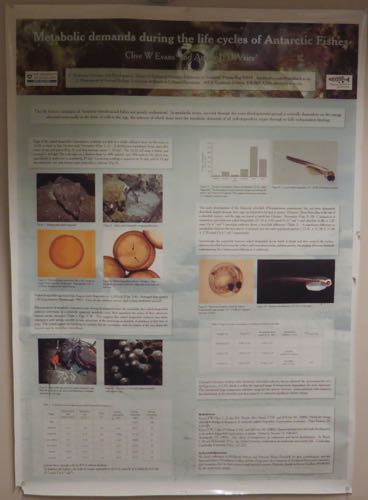 Poster on fish research. Dr. DeVries was one of the PI's on this project.
Poster on fish research. Dr. DeVries was one of the PI's on this project.
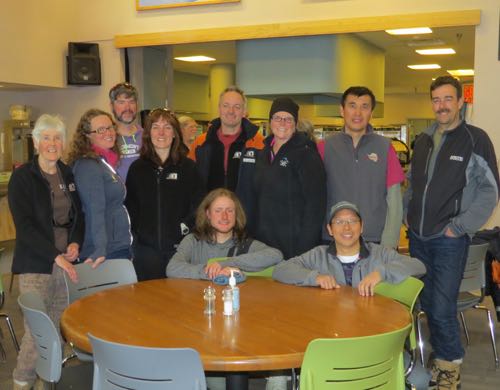 Team Kiwi and U.S. C531 together. Photo taken by a Kiwi who I do not know!
Team Kiwi and U.S. C531 together. Photo taken by a Kiwi who I do not know!
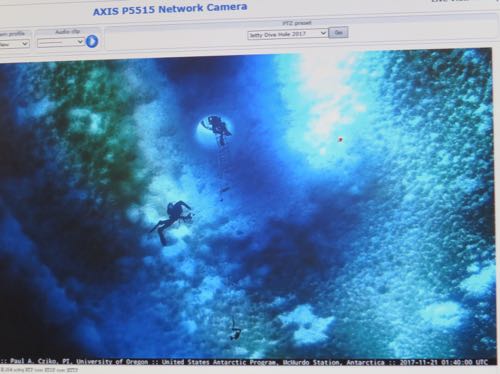 Divers can be seen from the underwater camera installed by Cziko's group.
Divers can be seen from the underwater camera installed by Cziko's group.
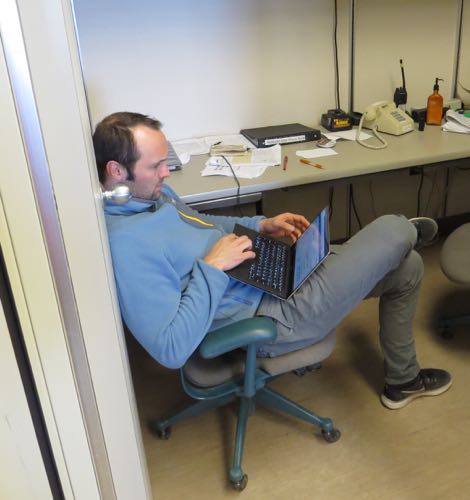 Konrad Meister is part of Paul Cziko's team. He is from Germany.
Konrad Meister is part of Paul Cziko's team. He is from Germany.
Flat Lorax loves all things science. Heidi, another fellow APES teacher and friend from Cedarburg HS is the recipient of this Lorax!
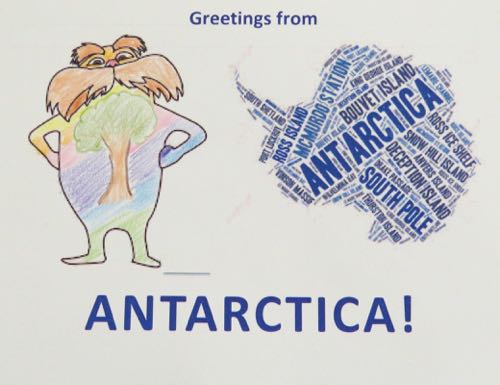 Flat Lorax card for a Cedarburg APES teacher and friend, Heidi Silverthorn!
Flat Lorax card for a Cedarburg APES teacher and friend, Heidi Silverthorn!

Add new comment